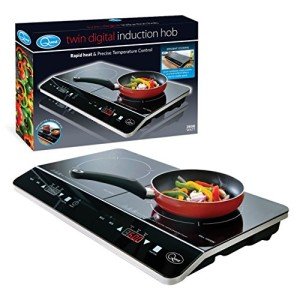This Story Behind Portable Induction Hobs Can Haunt You Forever!
The Rise of Sleek Induction Hobs: A Modern Solution for Kitchen Efficiency
In current years, the culinary world has experienced a noteworthy shift toward more efficient and easy to use cooking approaches. A considerable competitor in this development is the induction hob, often praised for its sleek style and unparalleled performance. This short article looks into the performance, benefits, and factors to consider of induction hobs, equipping homeowners and striving chefs with the understanding they need to make an educated choice.
What is an Induction Hob?
An induction hob is a type of cooktop that uses electromagnetic energy to generate heat straight in pots and pans. This innovation allows for exact temperature control, fast cooking times, and boosted safety, making induction hobs an attractive function in modern kitchen areas.
How Induction Cooking Works
Unlike traditional gas or electric hobs, which depend on heating elements to warm the surface area and consequently heat cookware, induction hobs develop a magnetic field that communicates with ferrous pots and pans (normally steel or cast iron). This interaction creates heat straight in the pot or pan, leading to quicker and more efficient cooking times.
Here's a summary of the induction cooking procedure:
- Magnetic Field Creation: When the hob is switched on, an electrical current go through coils underneath the surface area, producing a magnetic field.
- Heat Generation: The electromagnetic field causes an electric present in the cookware, triggering it to warm up.
- Immediate Cooking: Since the heat is created within the pots and pans, there is very little heat loss, permitting for rapid cooking and precise temperature level adjustments.
Secret Benefits of Induction Hobs
Induction hobs use a variety of advantages that attract both casual cooks and chef. Below are a few of the main benefits of utilizing induction cooking:
Enhanced Efficiency: Induction hobs are considerably more energy-efficient than their gas and electric equivalents. Approximately 90% of the energy produced is used for cooking, while gas ranges only utilize about 40% of the energy.
Fast Heating: The induction process heats up pots and pans nearly instantly, substantially minimizing cooking times. For example, water boils faster on an induction hob compared to standard stovetops.
Temperature Control: Induction hobs supply accurate temperature level control, permitting cooks to achieve the required heat level for different cooking strategies, from scorching to simmering.
Safety Features: The hob surface area remains cool to the touch unless cookware is put on it, significantly lowering the danger of burns. Furthermore, lots of induction hobs include security features such as automated shut-off and residual heat indications.
Sleek Aesthetic: The modern style of induction hobs includes a touch of elegance to cooking area spaces. Their flat surfaces are much easier to clean up and mix seamlessly with modern design.
Considerations Before Purchasing an Induction Hob
Despite their many advantages, there are some considerations to keep in mind when choosing to purchase induction hobs:
Compatible Cookware: Only pots and pans made from magnetic materials works with induction hobs. This includes cast iron, stainless-steel, and particular types of enameled cookware. Cookware made from glass, ceramic, or aluminum without a magnetic base will not work.
Higher Initial Cost: Generally, induction hobs can be more pricey upfront compared to gas or electrical hobs. However, this expense can be balanced out over time by energy cost savings and increased cooking performance.
Electrical power Dependency: Induction hobs require a trustworthy electricity source to operate, which might be a drawback throughout power failures or in locations with inconsistent electrical supply.
Table: Comparison of Cooking Methods
Function
Induction Hob
Gas Stove
Electric Hob
Energy Efficiency
High (90%)
Low (40%)
Moderate (70%)
Heating Time
Immediate
Moderate
Slower
Security
High
Moderate
Low
Surface Temperature
Cool
Hot
Hot
Cookware Compatibility
Magnetic-only
All types
Most types
Visual Appeal
Sleek and modern
Traditional
Standard
FAQs About Induction Hobs
1. Can I utilize non-magnetic cookware on an induction hob?No, only cookware
that is magnetic will deal with an induction hob. Try to find pots and pans labeled as induction-compatible. 2. Do induction hobs consume more electricity?Induction hobs are created for performance, consuming less electrical energy compared to
electrical hobs and gas ranges due to their quick heating capabilities. 3. Stainless Steel Induction Hobs for children?Yes, induction hobs are thought about much safer as the surface area remains cool to touch. Furthermore, safety features can be implemented to
lock settings and restrict gain access to. 4. How do I clean an induction hob?Cleaning an induction hob is fairly simple. Utilize a soft cloth or sponge with moderate detergent. Prevent abrasive cleaners that can scratch the surface. 5. Can I install an induction hob on my
own?While some induction hobs are developed for easy installation, it's recommended to work with a licensed expert to ensure appropriate setup and electrical connections.
Sleek induction hobs represent a
significant advancement in cooking innovation, using unequaled performance, safety, and visual appeal. As more homes seek to enhance their cooking experiences,
the adoption of induction hobs continues to increase. With their fast cooking times, precise control, and modern design, induction hobs are not simply a pattern but an important addition to contemporary cooking areas, dealing with the requirements of both professional chefs and home cooks alike. As with any cooking area appliance, it's essential to weigh the advantages and disadvantages carefully to figure out if an induction hob is the best option for your cooking needs. 